Kristine Hughes's Blog, page 87
September 12, 2014
END OF THE BRITISH BATTLE FOR MARYLAND, 1814
Victoria here. Our last post on the War of 1812 had the British withdrawing from the area after burning Washington City and capturing the town of Alexandria, VA, without firing a shot. Under the leadership of Naval Vice Admiral Alexander Cochrane and Army General Robert Ross, the British forces prepared to take the city of Baltimore, Maryland, a more formidable prize than the half-built capital had been.
 Fort McHenry, Baltimore, MD
Fort McHenry, Baltimore, MD
In the ultimate settlement of the War of 1812, neither side achieved its aims. However, the independence of Canada from the U.S. was assured. The War of 1812 was almost forgotten (except by Canadians) until this bicentennial, with one important exception. The words to the United States National Anthem, The Star-Spangled Banner, were written as the battle raged. I wonder how many U.S. citizens know it was NOT written about the Revolutionary War.
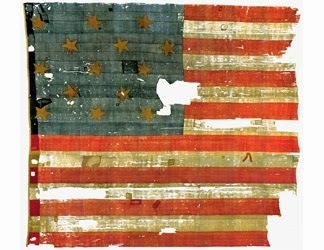 The historic flag that flew over Ft. McHenry, now on view at the Smithsonian Institution's Museum of American History, Washington D.C.
The historic flag that flew over Ft. McHenry, now on view at the Smithsonian Institution's Museum of American History, Washington D.C.
I visited Ft. McHenry in February 2014, all fixed up for the bicentennial of its finest hour. The website is here.
 Jerry, Pat and Ed at Ft. McHenry
Jerry, Pat and Ed at Ft. McHenry
It was a sunny cool day, perfectly appropriate for a visit. The Visitor Center has a short film telling the story of the 1814 battle and some excellent displays of relics of the battle.
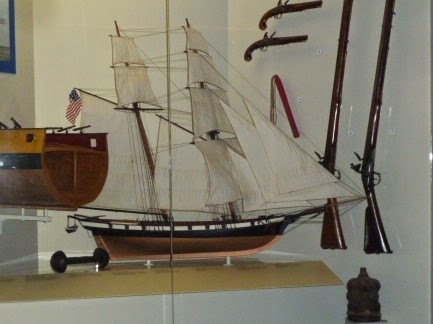 Model of the topsail schooner Chasseur
Model of the topsail schooner Chasseur
The Chasseur captured or sank 18 British ships and was known as "The Pride of Baltimore."
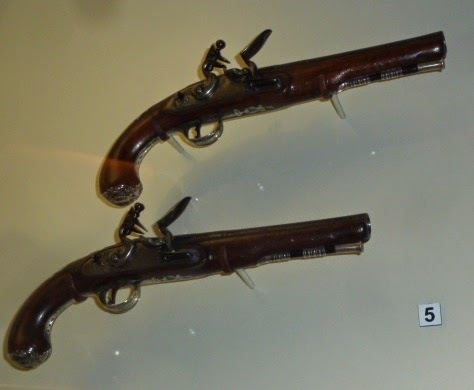 Pair of flintlock pistols
Pair of flintlock pistols
The pistols were made in London about 1800 and engraved with the motto "Steady."
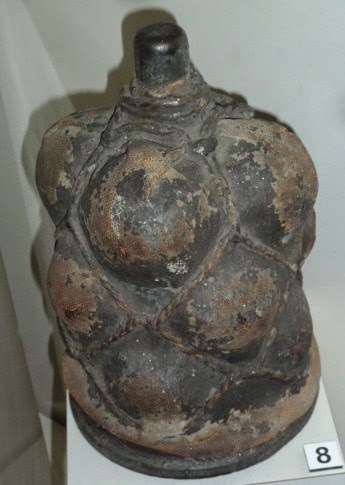 Grapeshot
Grapeshot
Made in Baltimore, about 1813; shot from a cannon, the 12-inch iron balls would scatter over a wide area and devastate a ship's rigging or seamen at close range.
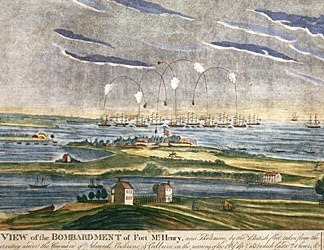 The Bombardment of Ft. McHenry by British warships
The Bombardment of Ft. McHenry by British warships
On September 13, 1814, British warships began the bombardment of Fort McHenry at 6 a.m. The British could not pass Fort McHenry because many had been sunk in the channel to prevent the enemy passage, as well as the attackers needing to sail close to the American cannons at the Fort. Eventually, after 25 hours of rather inaccurate shooting from both sides, the British ran low on ammunition and withdrew. The British ships received mostly minor damages, one person injured; the fort had four killed, 24 wounded, and damage to several of the buildings.
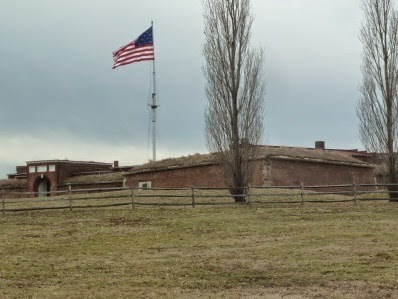 Walking up to the fort from the Visitor Center
Walking up to the fort from the Visitor Center
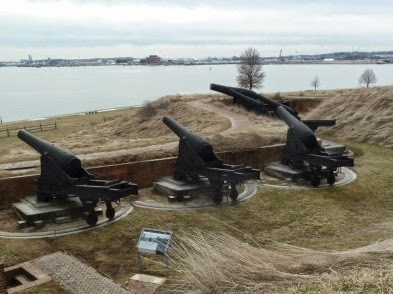 The cannons aimed at the harbor
The cannons aimed at the harbor
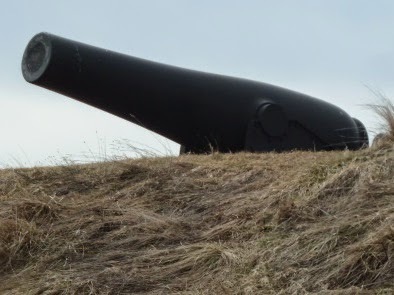 Up close and personal
Up close and personal
The day before the naval bombardment, General Robert Ross, who had led the attacks on and burning of Washington, led a group of British soldiers to what became the Battle of North Point. He was severely wounded by American sharpshooters and died as he was being returned to the fleet. After his body was placed in a barrel of Jamaican rum, it was taken to Halifax, Nova Scotia, where he is buried.
 Fort McHenry
Fort McHenry

Buildings within the fort have been restored and are well maintained; displays in many of them tell the story of Fort McHenry during the War of 1812 and the Civil War.
 Officer's Quarters
Officer's Quarters
 Costumed Guides Explain life in the fort in 1814
Costumed Guides Explain life in the fort in 1814
Getting back to the U.S. National Anthem, the lawyer and poet Francis Scott Key watched the British attack on Ft. McHenry from aboard HMS Tonnant where he had been sent to negotiate the exchange of prisoners between the British and American forces. He watched the battle from the decks, and in the morning, saw the stars and stripes flag still flying over the fort. He reported to the prisoners below deck that the battle had been won by the Americans.
 Statue of Francis Scott Key at Ft. McHenry
Statue of Francis Scott Key at Ft. McHenry
As Key returned to Baltimore, he wrote the poem "Defence of Fort M'Henry," and planned to set it to the tune of a popular song by British composer John Stafford Smith, "To Anacreon in Heaven." The poem was published on September 20, 1814, in The Patriot.
 Francis Scott Key, ca. 1816by Joseph Wood, artist (177801832)Walters Art Museum, Baltimore, MD
Francis Scott Key, ca. 1816by Joseph Wood, artist (177801832)Walters Art Museum, Baltimore, MD
We know the song today as "The Star Spangled Banner," to which we wish a Happy 200th birthday. The legislation naming it the official national anthem was adopted by Congress in 1931 and signed by President Herbert Hoover.
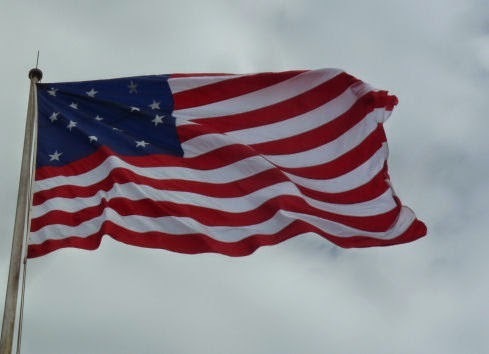 The U.S. Flag of 1814 flies over Fort McHenry.
The U.S. Flag of 1814 flies over Fort McHenry.
Oh say, can you see by the dawn's early light,
What so proudly we hailed at the twilight's last gleaming,
Whose broad stripes and bright stars through the perilous fight,
O'er the ramparts we watched, were so gallantly streaming?
And the rockets' red glare, the bombs bursting in air,
Gave proof through the night that our flag was still there;
Oh say does that star-spangled banner yet wave,
O'er the land of the free and the home of the brave?
There are several additional verses, not often sung.

.
 Fort McHenry, Baltimore, MD
Fort McHenry, Baltimore, MDIn the ultimate settlement of the War of 1812, neither side achieved its aims. However, the independence of Canada from the U.S. was assured. The War of 1812 was almost forgotten (except by Canadians) until this bicentennial, with one important exception. The words to the United States National Anthem, The Star-Spangled Banner, were written as the battle raged. I wonder how many U.S. citizens know it was NOT written about the Revolutionary War.
 The historic flag that flew over Ft. McHenry, now on view at the Smithsonian Institution's Museum of American History, Washington D.C.
The historic flag that flew over Ft. McHenry, now on view at the Smithsonian Institution's Museum of American History, Washington D.C.I visited Ft. McHenry in February 2014, all fixed up for the bicentennial of its finest hour. The website is here.
 Jerry, Pat and Ed at Ft. McHenry
Jerry, Pat and Ed at Ft. McHenryIt was a sunny cool day, perfectly appropriate for a visit. The Visitor Center has a short film telling the story of the 1814 battle and some excellent displays of relics of the battle.
 Model of the topsail schooner Chasseur
Model of the topsail schooner ChasseurThe Chasseur captured or sank 18 British ships and was known as "The Pride of Baltimore."
 Pair of flintlock pistols
Pair of flintlock pistolsThe pistols were made in London about 1800 and engraved with the motto "Steady."
 Grapeshot
GrapeshotMade in Baltimore, about 1813; shot from a cannon, the 12-inch iron balls would scatter over a wide area and devastate a ship's rigging or seamen at close range.
 The Bombardment of Ft. McHenry by British warships
The Bombardment of Ft. McHenry by British warshipsOn September 13, 1814, British warships began the bombardment of Fort McHenry at 6 a.m. The British could not pass Fort McHenry because many had been sunk in the channel to prevent the enemy passage, as well as the attackers needing to sail close to the American cannons at the Fort. Eventually, after 25 hours of rather inaccurate shooting from both sides, the British ran low on ammunition and withdrew. The British ships received mostly minor damages, one person injured; the fort had four killed, 24 wounded, and damage to several of the buildings.
 Walking up to the fort from the Visitor Center
Walking up to the fort from the Visitor Center The cannons aimed at the harbor
The cannons aimed at the harbor Up close and personal
Up close and personalThe day before the naval bombardment, General Robert Ross, who had led the attacks on and burning of Washington, led a group of British soldiers to what became the Battle of North Point. He was severely wounded by American sharpshooters and died as he was being returned to the fleet. After his body was placed in a barrel of Jamaican rum, it was taken to Halifax, Nova Scotia, where he is buried.
 Fort McHenry
Fort McHenry
Buildings within the fort have been restored and are well maintained; displays in many of them tell the story of Fort McHenry during the War of 1812 and the Civil War.
 Officer's Quarters
Officer's Quarters Costumed Guides Explain life in the fort in 1814
Costumed Guides Explain life in the fort in 1814Getting back to the U.S. National Anthem, the lawyer and poet Francis Scott Key watched the British attack on Ft. McHenry from aboard HMS Tonnant where he had been sent to negotiate the exchange of prisoners between the British and American forces. He watched the battle from the decks, and in the morning, saw the stars and stripes flag still flying over the fort. He reported to the prisoners below deck that the battle had been won by the Americans.
 Statue of Francis Scott Key at Ft. McHenry
Statue of Francis Scott Key at Ft. McHenryAs Key returned to Baltimore, he wrote the poem "Defence of Fort M'Henry," and planned to set it to the tune of a popular song by British composer John Stafford Smith, "To Anacreon in Heaven." The poem was published on September 20, 1814, in The Patriot.
 Francis Scott Key, ca. 1816by Joseph Wood, artist (177801832)Walters Art Museum, Baltimore, MD
Francis Scott Key, ca. 1816by Joseph Wood, artist (177801832)Walters Art Museum, Baltimore, MDWe know the song today as "The Star Spangled Banner," to which we wish a Happy 200th birthday. The legislation naming it the official national anthem was adopted by Congress in 1931 and signed by President Herbert Hoover.
 The U.S. Flag of 1814 flies over Fort McHenry.
The U.S. Flag of 1814 flies over Fort McHenry.Oh say, can you see by the dawn's early light,
What so proudly we hailed at the twilight's last gleaming,
Whose broad stripes and bright stars through the perilous fight,
O'er the ramparts we watched, were so gallantly streaming?
And the rockets' red glare, the bombs bursting in air,
Gave proof through the night that our flag was still there;
Oh say does that star-spangled banner yet wave,
O'er the land of the free and the home of the brave?
There are several additional verses, not often sung.

.
Published on September 12, 2014 00:00
September 7, 2014
THE DUKE OF WELLINGTON TOUR: AS IT HAPPENS
Have you been checking into our Facebook page, where we've been posting lots of tour photos? You'll find the link in the right hand sidebar. In case you've missed them, here are just a few snaps to let you know what we've been up to . . . . .
Random Photos of London
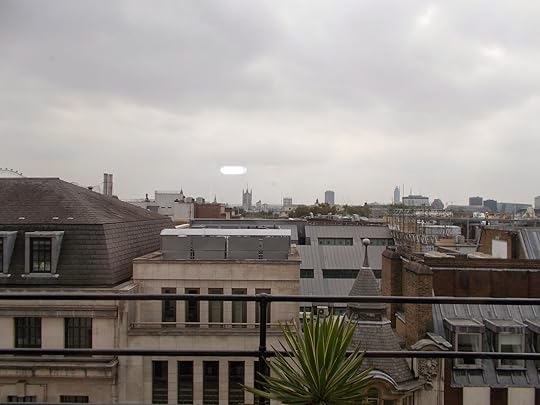
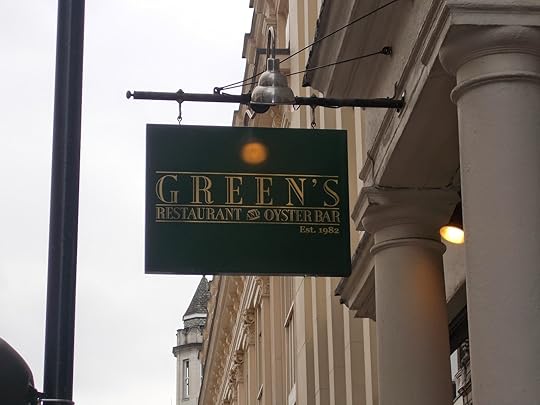
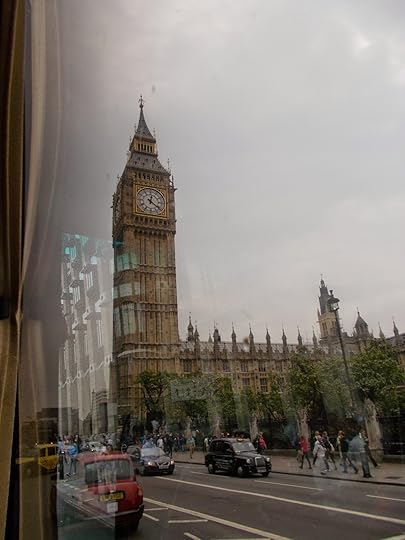
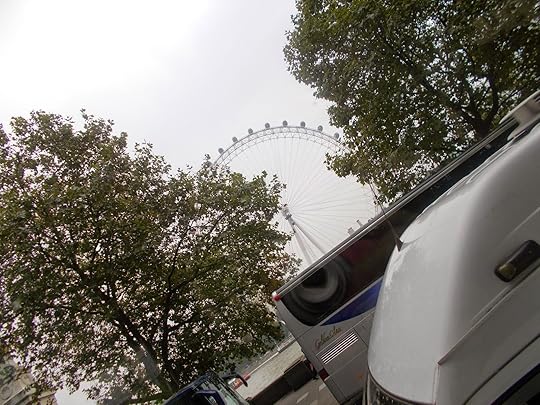
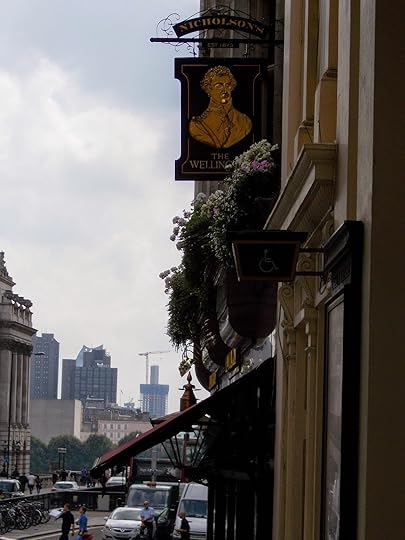
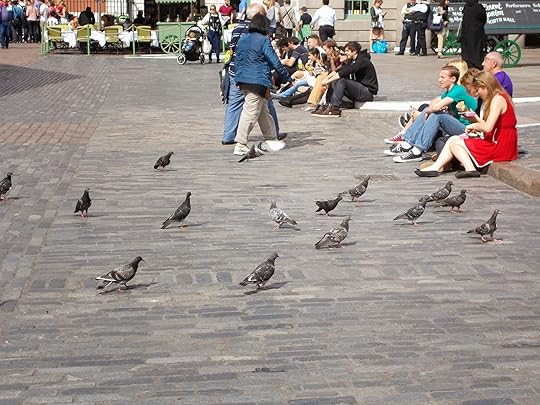
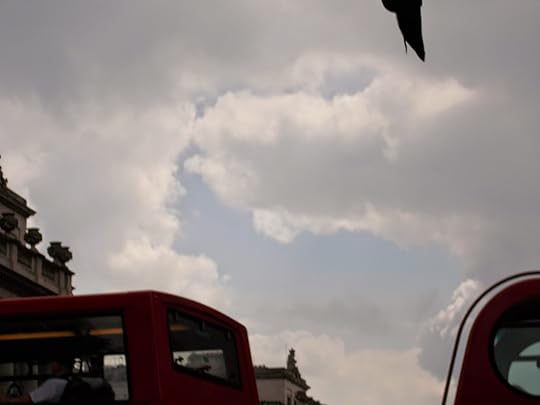
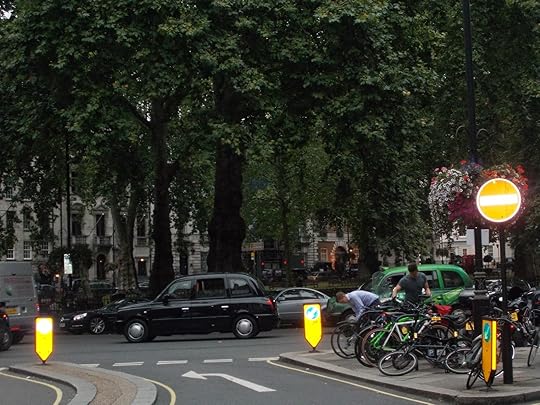
Random Photos of London








Published on September 07, 2014 00:41
September 3, 2014
A ROYAL DAY OUT
What could be more exciting than a day in London? How about a day at the Palace?
Kristine and Victoria were joined by author Diane Gaston and her sister Marilyn Gaston for a whole day exploring Buckingham Palace and vicinity.
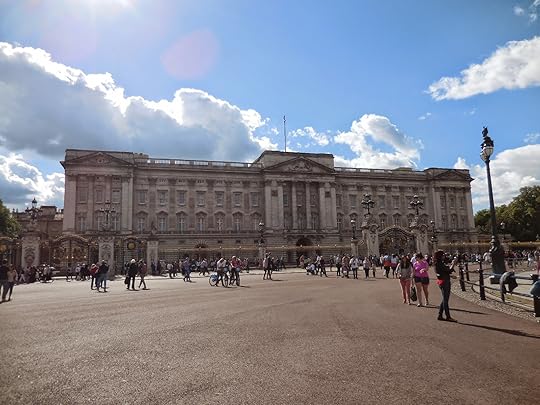 Buckingham Palace on Sunday, Aug. 31, 2014
Buckingham Palace on Sunday, Aug. 31, 2014
On Sunday we had wandered around on the traffic-free all, enjoying pedestrian freedom from the rush of busses, lorries and cars. What a great idea, London, to have this every Sunday.
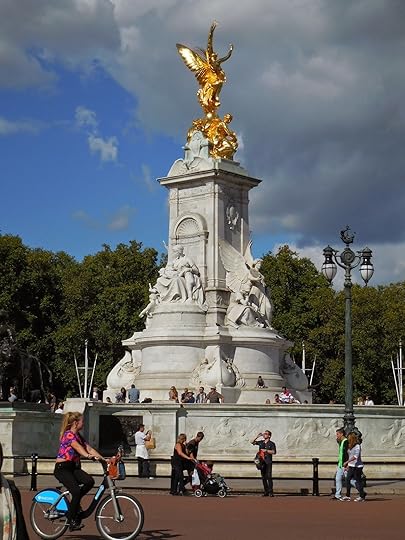 The Victoria Memorial
The Victoria Memorial
On Tuesday, once Diane and Marilyn had a good night's sleep, we four arrived at the Palace for our Royal Day Out, cleverly booked in advance by Kristine. Starting at the Royal Mews, we were dazzled by carriages, a lime, even a few horses. Our guide was very knowledgeable and answered all our questions, except "Could we go for a spin?"
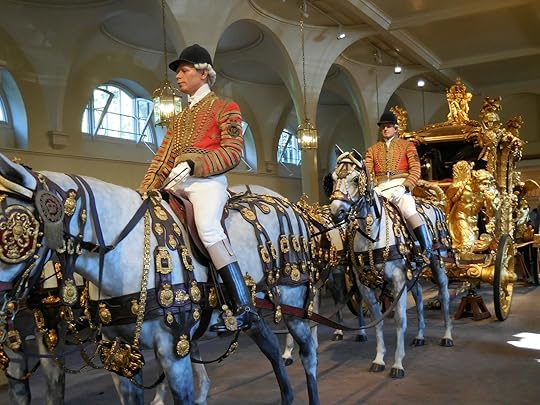
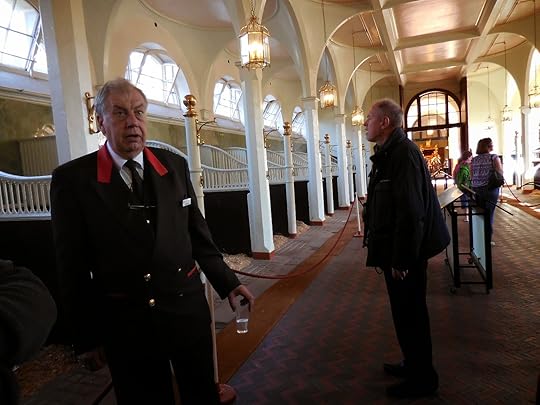 Top, the Coronation Coach; above our guide in the stables
Top, the Coronation Coach; above our guide in the stables
After promising ourselves to return to the fantastic gift shop, we went on to the next venue on our Royal Day Out. the Queen's Gallery, exhibiting selections from the Royal Collection related to the reigns of the first two Georges: The First Georgians: Art and Monarchy 1714-1760. 2014 marks the 300th anniversary of the arrival of the House of Hanover on the British Throne. For more information, click here.
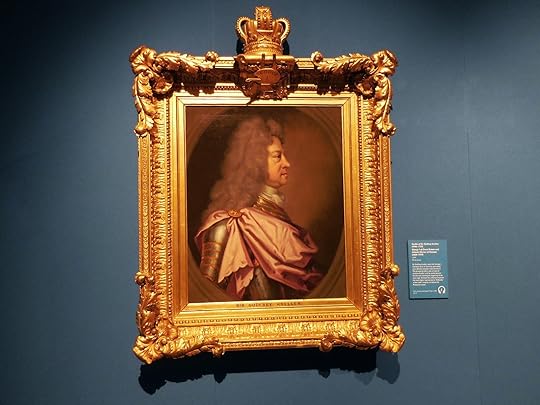 Studio of Sir Godfrey Kneller: George I, portrayed as Defender of the Faith
Studio of Sir Godfrey Kneller: George I, portrayed as Defender of the Faith
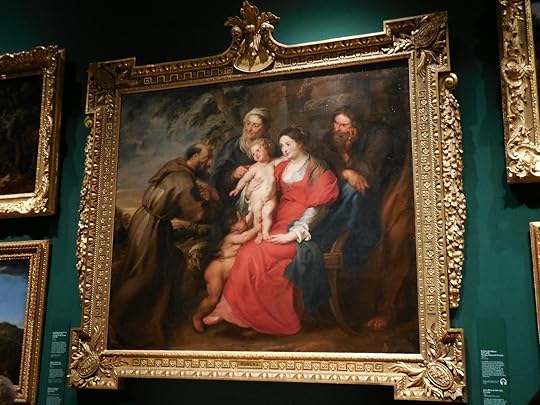 Rubens, The Holy Family with St. Francis, 1620-30
Rubens, The Holy Family with St. Francis, 1620-30
Above, one of the many treasures acquired (in 1723) by the first Georges, a continuing the collecting tradition of the British monarchs.
The final and greatly anticipated part of our Royal Day Out was the tour of the Palace itself.
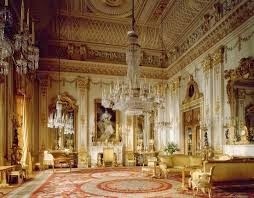 The White Drawing Room
The White Drawing Room
No pictures are allowed inside the State Rooms, alas. To see pictures of the State Rooms. click here.
Interspersed among the other treasures are photos and objects from A Royal Childhood, including many family films. For more information, click here.
Once through the Palace, visitors leave by the Bow Room and go into the garden where many large white tents hold gift shops, a cafe and other facilities. Finally, an opportunity for some snaps!
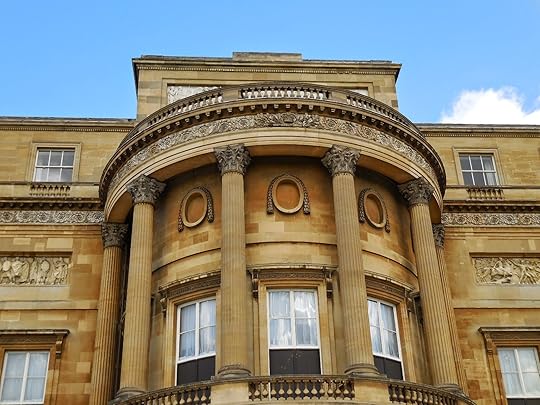

We headed through the garden and took many more pictures...
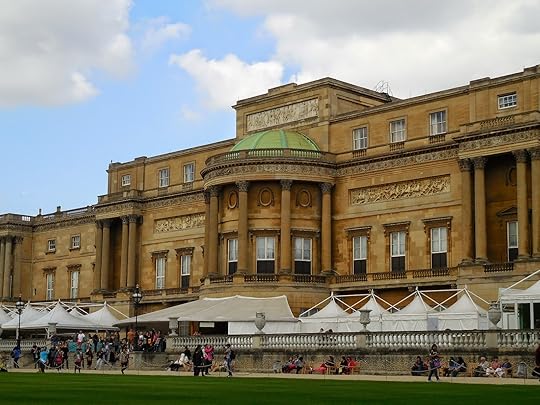
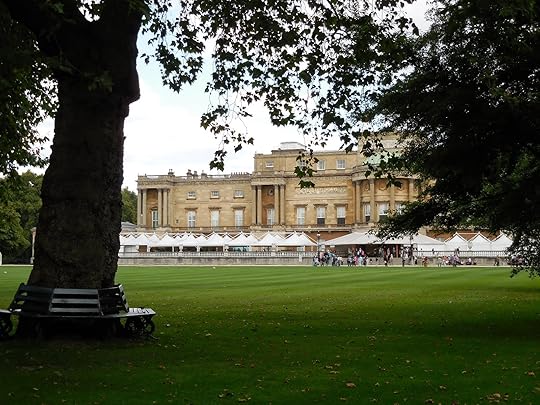
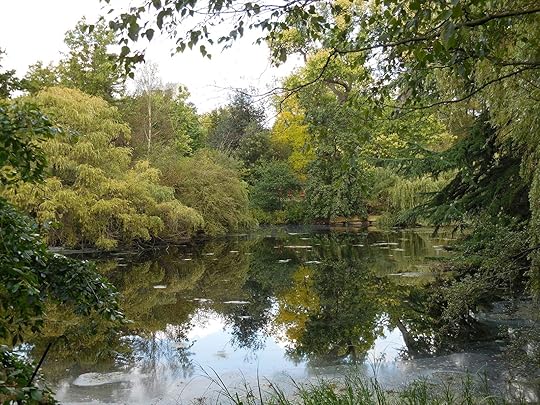
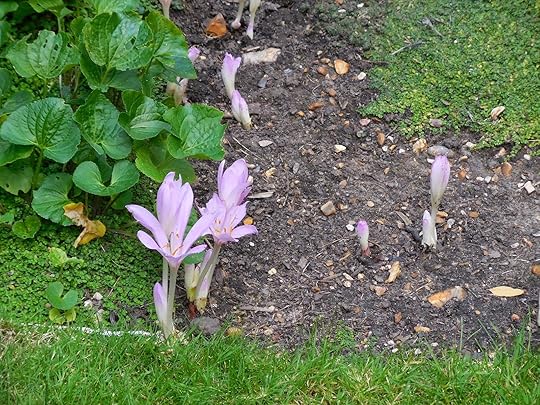 A patch of Autumn Crocus
A patch of Autumn Crocus
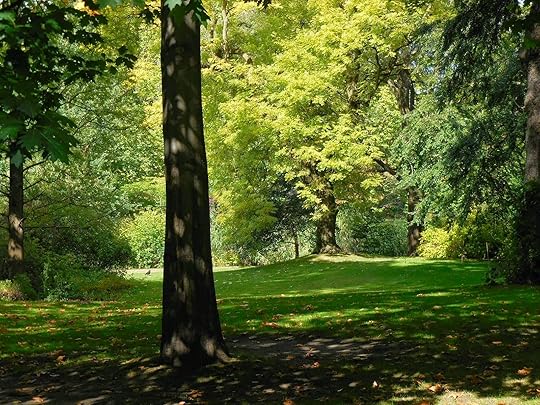
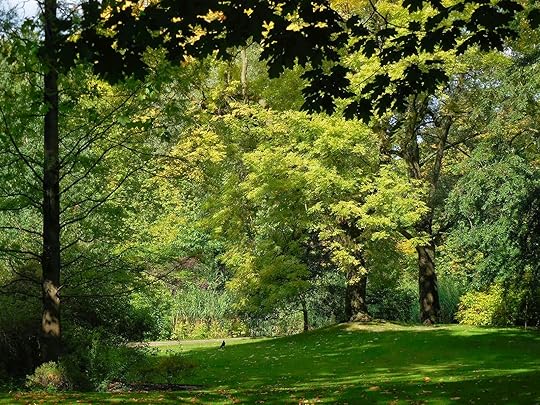 What could be prettier and more serene in the midst of London?
What could be prettier and more serene in the midst of London?
After a most satisfying and educational Royal Day Out, we rushed off for some more refreshment -- naturally!
Kristine and Victoria were joined by author Diane Gaston and her sister Marilyn Gaston for a whole day exploring Buckingham Palace and vicinity.
 Buckingham Palace on Sunday, Aug. 31, 2014
Buckingham Palace on Sunday, Aug. 31, 2014On Sunday we had wandered around on the traffic-free all, enjoying pedestrian freedom from the rush of busses, lorries and cars. What a great idea, London, to have this every Sunday.
 The Victoria Memorial
The Victoria MemorialOn Tuesday, once Diane and Marilyn had a good night's sleep, we four arrived at the Palace for our Royal Day Out, cleverly booked in advance by Kristine. Starting at the Royal Mews, we were dazzled by carriages, a lime, even a few horses. Our guide was very knowledgeable and answered all our questions, except "Could we go for a spin?"

 Top, the Coronation Coach; above our guide in the stables
Top, the Coronation Coach; above our guide in the stablesAfter promising ourselves to return to the fantastic gift shop, we went on to the next venue on our Royal Day Out. the Queen's Gallery, exhibiting selections from the Royal Collection related to the reigns of the first two Georges: The First Georgians: Art and Monarchy 1714-1760. 2014 marks the 300th anniversary of the arrival of the House of Hanover on the British Throne. For more information, click here.
 Studio of Sir Godfrey Kneller: George I, portrayed as Defender of the Faith
Studio of Sir Godfrey Kneller: George I, portrayed as Defender of the Faith Rubens, The Holy Family with St. Francis, 1620-30
Rubens, The Holy Family with St. Francis, 1620-30Above, one of the many treasures acquired (in 1723) by the first Georges, a continuing the collecting tradition of the British monarchs.
The final and greatly anticipated part of our Royal Day Out was the tour of the Palace itself.
 The White Drawing Room
The White Drawing RoomNo pictures are allowed inside the State Rooms, alas. To see pictures of the State Rooms. click here.
Interspersed among the other treasures are photos and objects from A Royal Childhood, including many family films. For more information, click here.
Once through the Palace, visitors leave by the Bow Room and go into the garden where many large white tents hold gift shops, a cafe and other facilities. Finally, an opportunity for some snaps!


We headed through the garden and took many more pictures...



 A patch of Autumn Crocus
A patch of Autumn Crocus
 What could be prettier and more serene in the midst of London?
What could be prettier and more serene in the midst of London?After a most satisfying and educational Royal Day Out, we rushed off for some more refreshment -- naturally!
Published on September 03, 2014 23:31
September 2, 2014
A ROYAL DAY OUT
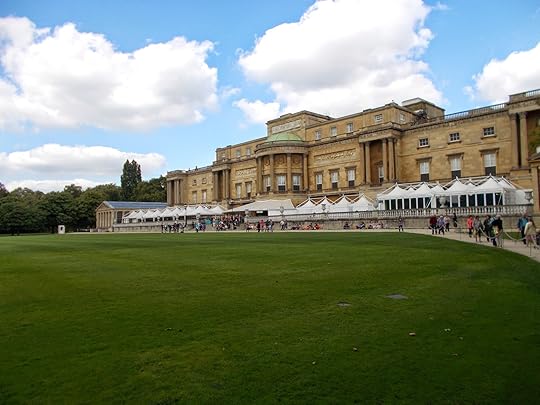
Read about our Royal day out in London on our Facebook page - more photos, too! Link to our page can be found in the right hand sidebar.
Published on September 02, 2014 09:56
August 31, 2014
A GOOD DAY WAS HAD BY BOTH
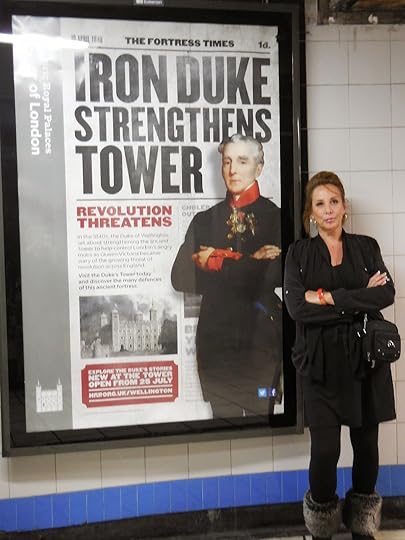
More pictures and details of our day on our Facebook page - Link in right hand sidebar. Frankly, this was the highlight of the day as far as I was concerned. Me and Artie, together again.
Published on August 31, 2014 13:40
Mudlarking on the River Thames
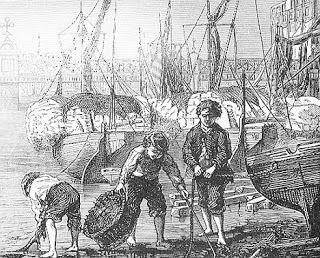 Originally published July 1, 2010:
Originally published July 1, 2010:Many, many (many) years ago, when I first began doing research into London history, I was intrigued to learn about the Mudlarks of London, people from the poorer classes, typically children and the elderly, who scavenged along the banks of the River Thames at low tide looking for anything remotely valuable - clothing, coal, coins, pottery, items that had fallen off of ships and barges, etc etc. - that they could turn around and sell to the rag and bone man in order to earn enough for a meal. Mudlarking was considered to be lowest rung on the scavenger's ladder, so it was with great surprise, and a lot of pleasure, that I found myself actually mudlarking during my jaunt in London.
Having roamed the streets and gardens of London proper and venturing as far north as Hampstead and as far west as Windsor, my daughter, Brooke, and I turned our attention one day to the area of London south of the River - to Southwark, that once desperate area known for being the den of drunken sailors, thieves, prostitutes, cut throats and the Clink Prison - now a really tacky tourist trap.
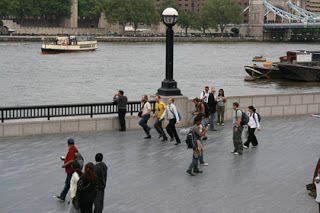 As we were walking along the River on the Queen's Walk, a pedestrian promenade located on the South Bank of the River between Lambeth Bridge and Tower Bridge, we came upon stone steps leading down to the River. The tide was out, exposing what appeared to be a rocky beach of sorts. We made our way down and, uncertain as to whether or not we were actually allowed down there, tentatively began to walk towards the shore.
As we were walking along the River on the Queen's Walk, a pedestrian promenade located on the South Bank of the River between Lambeth Bridge and Tower Bridge, we came upon stone steps leading down to the River. The tide was out, exposing what appeared to be a rocky beach of sorts. We made our way down and, uncertain as to whether or not we were actually allowed down there, tentatively began to walk towards the shore. 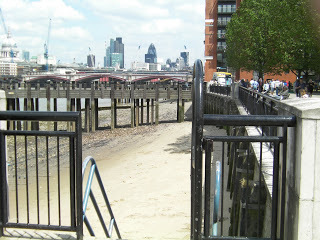
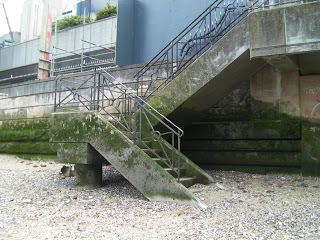
You can see the usual high water mark from the algae line in the photo above. I stood there gazing at this rare view of the River with it's beach exposed, recalling all I'd read about the long ago mudlarks. As I looked at St. Paul's Cathedral on the distant shoreline, my heart skipped a beat as I realized that this was one of those moments I'd remember always - to be able to, for a moment, at a distance of centuries - walk in the mudlark's shoes, to see the River as they'd seen it, to feel, as they must have done, as though I were somewhere I shouldn't be, doing something I shouldn't be doing, but compelled to carry on.
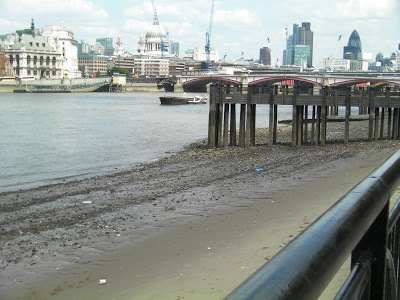
As I was telling Brooke the tale of the mudlarks, I glanced down at the sand and saw a shard of blue and white pottery. Holding it up, I showed Brooke. Where had it come from, she asked. Who knows, said I (with infinite motherly wisdom). Honestly, it could have washed up last week or last century. Or two centuries ago. Before I knew it, I'd spied another shard, and another. I was off, while my daughter rolled her eyes, telling me that she couldn't believe I was actually garbage picking on the beach. Treasure hunting, I said, correcting her. I told her that many valuable objects were known to have washed up from the Thames - Medieval stuff, Restoration gee gaws, Georgian trash, even. As if to prove my point, at that moment I found a bone. Really. A dried out animal bone. Maybe the leg bone of a dog. Fascinated, Brooke stepped in for a closer look. Is it new? she asked. Nah, I replied sagely, look, the bone and the marrow are all dried out. What's it from? she asked. Some small animal, like a dog, I said as I gingerly let the bone fall to the sand. Of course, had the bone come complete with a tag that read "Authentic Leg Bone of a Regency Era Dog" I would have kept it, but the bone had done it's trick - now Brooke had gotten scavenger fever. For about an hour we combed the beach until I noted (again with great wisdom) that the tide was beginning to turn and come back in. By this time, I'd amassed a bagful of blue and white pottery shards, one of them complete with the full figure of a robed Oriental person. I will put these shards in a bowl at home, with a note beneath them that reads "Found on banks of Thames River June 2010" and will occasionally sift through each one and remember with great fondness the day I became a mudlark. Here's a photo of the sign above the bridge we were scavenging beneath -
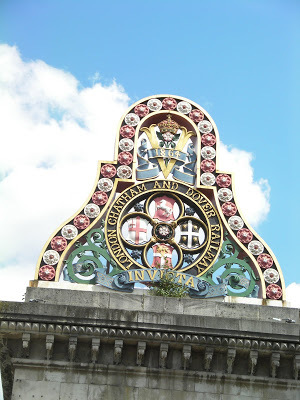
Leaving the sand and returning to the streets of Southwark, Brooke and I came upon a pub called . . . The Mudlark (4 Montague Close, Southwark, London SE1 9DA). I later found out that today there's a London-based Society of Thames Mudlarks, who are granted a special license by the Port of London to excavate the beach and who must turn over finds of historic importance to the Museum of London, whose holdings include the Cheapside Hoard, an eye-popping collection of 400 pieces of Elizabethan and Jacobean jewelry, dating back to between 1560 and 1630. The hoard was probably buried in the early 17th century and discovered in 1912, by workmen digging in a cellar in the neighborhood of Cheapside. Which is why there are now lots of regulations surrounding mudlarking about which Brooke and I were blissfully unaware.
It seems that journalist Nick Curtis took to the sand by the Thames himself and wrote about his own mudlarking adventure in the London Evening Standard. Here's a portion of his article:
My day begins with the early morning low tide, in the mud of the foreshore near Custom House on the north bank near the Tower of London. Here, with commuters trudging above, I meet Ian Smith, a leading member of London's loose community of mudlarks. Ian deals in antiques but he's been combing the banks of the Thames for fun since the 1970s. When we meet, he's hip deep in a muddy hole.
Anyone can wander down to the foreshore and pick up objects from the surface, but you need a licence from the Port of London Authority to dig or to sift. “Treasure” is the property of the Crown, although, as Ian says, no one would ever deliberately conceal valuables on a silty tidal foreshore. Plus, things don't wash up from the river, they wash out from the land. Finds of historic interest are shown to the Port Antiquities Scheme's finds liaison officer and archaeologist Kate Sumnall and, ideally, donated or sold to the collection of the Museum of London, where she works. Ian once found a hoard of counterfeit George II coins, and has donated several exquisite medieval pewter badges — lucky charms or pilgrims' tokens — to the museum.
Even at first glance, there is tons of stuff on the shore. Victorian spikes, nails and barrel hoops, huge oyster shells and blackened animal bones and teeth. Once I've got my eye in, I also spot hundreds of clay pipe fragments. The smallest are the oldest, and were given away free in the 16th century with a tiny amount of the new and expensive import, tobacco. After just over an hour I've also found an ornate key, a stamped lead token, a pewter button and an iron flint striker for kindling fires.
Most of these are probably 17th or 18th century, but fragments of stoneware Bellarmine jars showing a bearded face — supposedly mocking an abstinent cardinal — might be from the 13th century. I'd love to search longer but time, and the Thames tide, wait for no mudlark.
Speaking of tides, Brooke and I stumbled upon the stairs at low tide, but if you want to plan your day around mudlarking, here's a link to the Thames Tides Table.
Published on August 31, 2014 01:01
August 30, 2014
CHECK OUT OUR FACEBOOK PAGE
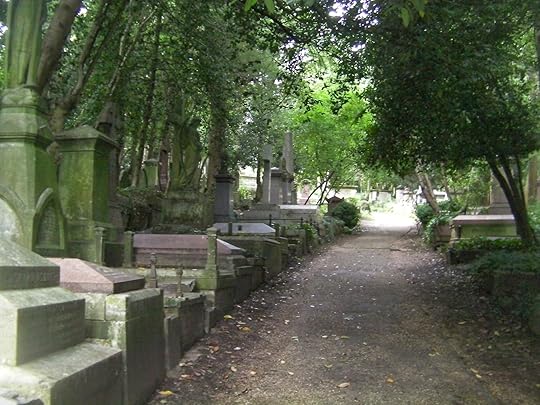
We've just posted many photos and updates of our day out at Kenwood House and Highgate Cemetery on our Facebook page - link in the right hand sidebar.
Published on August 30, 2014 10:01
August 29, 2014
ARRIVED IN LONDON!!!
Kristine and Victoria here -- at the Sloane Square Hotel together.
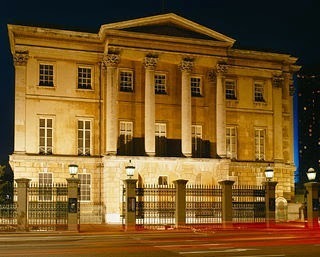
Victoria passed right by Apsley House on the way from Paddington Station and the Heathrow Express.
Kristine was curled up in the Bow Window of the hotel room pretending she was Beau Brummell at White's.
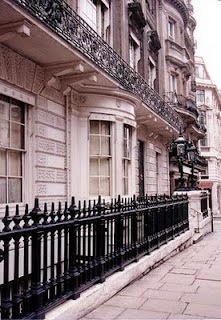 White's Club, St James's Street
White's Club, St James's Street
Now we are off to have tea and/or dinner. We'll keep you posted on what we find of interest (everything)!

Victoria passed right by Apsley House on the way from Paddington Station and the Heathrow Express.
Kristine was curled up in the Bow Window of the hotel room pretending she was Beau Brummell at White's.
 White's Club, St James's Street
White's Club, St James's StreetNow we are off to have tea and/or dinner. We'll keep you posted on what we find of interest (everything)!
Published on August 29, 2014 08:35
OFF TO ENGLAND

Kristine here, landing at Heathrow today at 6 a.m., twelve hours before meeting up with Victoria once she jets in from Paris and we begin our three week sojourn in England. We are so looking forward to welcoming the Duke of Wellington tour group to London next week, but for now, we'll be getting up to all sorts of historic things on our own: Buckingham Palace, the Queen's Gallery, Highgate Cemetery, Kenwood House, Clarence House, mudlarking on the Thames, Sir John Soane's Museum for the Peace Breaks Out exhibit - and that's before the tour even begins!
I thought I'd let you know about changes to the blog whilst we're in Merry Olde, so here goes:
We've taken the news stories out of the sidebars for the duration because, let's be honest, Victoria and I aren't about to commit to updating them whilst we're cavorting through England.
We've only pre-scheduled a few posts for the time we're away and will instead be popping in to post spontaneous updates regarding our travels on a regular basis, so check back here often to see what we get up to, and don't forget to also follow our doings on Facebook and Twitter - you'll find the links to both in the right hand sidebar.
By the time most of you read this, I shall be walking the streets of London, taking photos and making lots of notes for future blog posts. We'll see you soon!
Note to Victoria: I reckon you'll be at our hotel around 7 p.m. Will be in the room waiting for you with ice bucket and drinks at the ready. After cocktails, we'll stroll down to the Duke of Wellington for dinner - two blocks away. All things Wellington, all the time. Huzza - let the Artie-fest begin!
Published on August 29, 2014 00:00
August 27, 2014
THE WELLINGTON CONNECTION: AUTHOR LADY ANTONIA FRASER
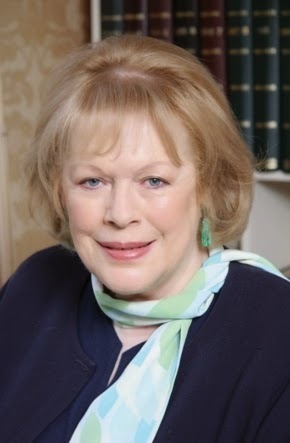
By Guest Blogger Spencer Blohm
Lady Antonia Fraser is one of the most highly respected and influential biographers in the world. A born and raised Londoner, she’s shined a light on history's most prolific, controversial, and infamous characters. For her 82nd birthday on August 27th, let’s take a look at the times of a woman who’s lived a life not too dissimilar from her own book subjects. Born in London in 1932 to the 7th Earl of Longford and the Countess of Longford, part of the well-known “Literary Longfords,” who come from a long line of authors, biographers, and poets. Growing up in a literary inclined household meant an emphasis on education, particularly for Lady Antonia, whom her mother described as “the most precocious” of the eight Pakenham children. Her education included stints at the Dragon School in Oxford, St Mary’s School, Ascot, and Oxford. Following her graduation, she began work as an assistant at Weidenfeld & Nicolson, a publishing house. However, she soon met and married Sir Hugh Fraser, a Member of Parliament for Stafford and Stone, and quit working in order to become a homemaker and mother. For nearly 15 years, her focus was on her children and husband, but the creative instincts so deeply ingrained in her DNA were always boiling under the surface. After it was suggested to her mother (also a published author) that she should write a biography about Mary Queen of Scots, Lady Antonia persuaded her mother to let her write the book and, while carrying her fifth child, she began her research. When asked about how she could have possibly managed to raise six children while also doing the extensive research and hard work required to write historical biographies Lady Antonia explained to The Telegraph: “I allowed no one to disturb me between 9.30am and 12.30pm with anything much short of a broken leg. My daughter Natasha put up a sign on my door saying, ‘Nobody allowed not even you otherwise no pocket money, no conversation and worst of all no mother’” In 1969 Mary, Queen of Scots was published, marking the beginning of the then-37-year-old Lady Antonia’s long and wildly successful career. From there, she quickly churned out book after book detailing the rich history of her native England and its eccentric monarchy. As her writing career took off, her marriage disintegrated and she notoriously found solace in the playwright Harold Pinter who, at the time, was married to the successful stage and film actress Vivien Merchant. With both of them leaving their respective spouses in order to get married, Lady Antonia had her first real experience with the press. However it wasn’t the literary pages who were now writing about her, and the subject was far from her work. After the couple wed in 1980, she continued to write and published historical biographies of noted monarchs like Charles II, the fabled Boadicea, Henry VIII and his many wives, as well as a critical examination of the life of a woman in the 17th century England called The Weaker Vessel . It was in 2001, however, that her most well-known book, Marie Antoinette: The Journey was published. The book offers a refreshingly unbiased and deeply analytical look at the life of the notorious French queen. Before the book was even published, director Sofia Coppola reached out to Lady Antonia about discussing the possibility of Coppola buying the rights to the book to make a film. Of this proposition Lady Antonia noted in her diary, “But of course the film won’t actually happen. Because it never does.” Obviously she was wrong, and she served as a source as Coppola both wrote and directed the movie. Lady Antonia was a vital resource to the creation of the film and met with many of the cast and crew before and during filming to consult with them on the direction they were going and the historical accuracy of it all. Of the final product, she wrote “In principle I loved Sofia’s use of anachronisms—the witty flash of sneakers amid a delicious montage of pink and turquoise shoes was especially pleasing. None of the liberties taken bothered me.” To coincide with the film’s release, her book was republished in 2006 and gained an even larger following than it had after its initial release. She continued to focus on the French court, as a change of pace, and published Love and Louis XIV: The Women in the Life of the Sun King which, perhaps not coincidentally, was also released in 2006. It was at this time she decided to focus on a subject much closer to home; herself and her husband. Following the death of her husband in 2008, she decided to write about her life with her late husband and the decidedly elegant and grand 33 years they spent together. The book, Must you Go?: My Life with Harold Pinter was published in 2010 to critical praise. While she has yet to release a book since 2010, Lady Antonia continues to be an important figure in English culture. She was elevated to Dame Commander of the Order of the British Empire in 2011 and has continued to work on passion projects like the protection of English cultural objects and even serves as an advisor to the Man Booker International Prize committee. She also revealed in April that she’s currently working on a memoir of her early life, slated to be published in 2015. It looks like despite having every right to retire and put up her feet, Lady Antonia Fraser still cannot resist the drive to write, something for which we are surely all grateful.
Spencer Blohm is a freelance entertainment blogger for http://www.direct-ticket.net/. He came to know about Lady Antonia through his love of medieval and renaissance monarchy and is still a steadfast (although slightly closeted) history buff. He lives and works in Chicago where he can usually be found with his nose in a book or eyes glued to the T.V.
Published on August 27, 2014 00:30
Kristine Hughes's Blog
- Kristine Hughes's profile
- 6 followers
Kristine Hughes isn't a Goodreads Author
(yet),
but they
do have a blog,
so here are some recent posts imported from
their feed.



